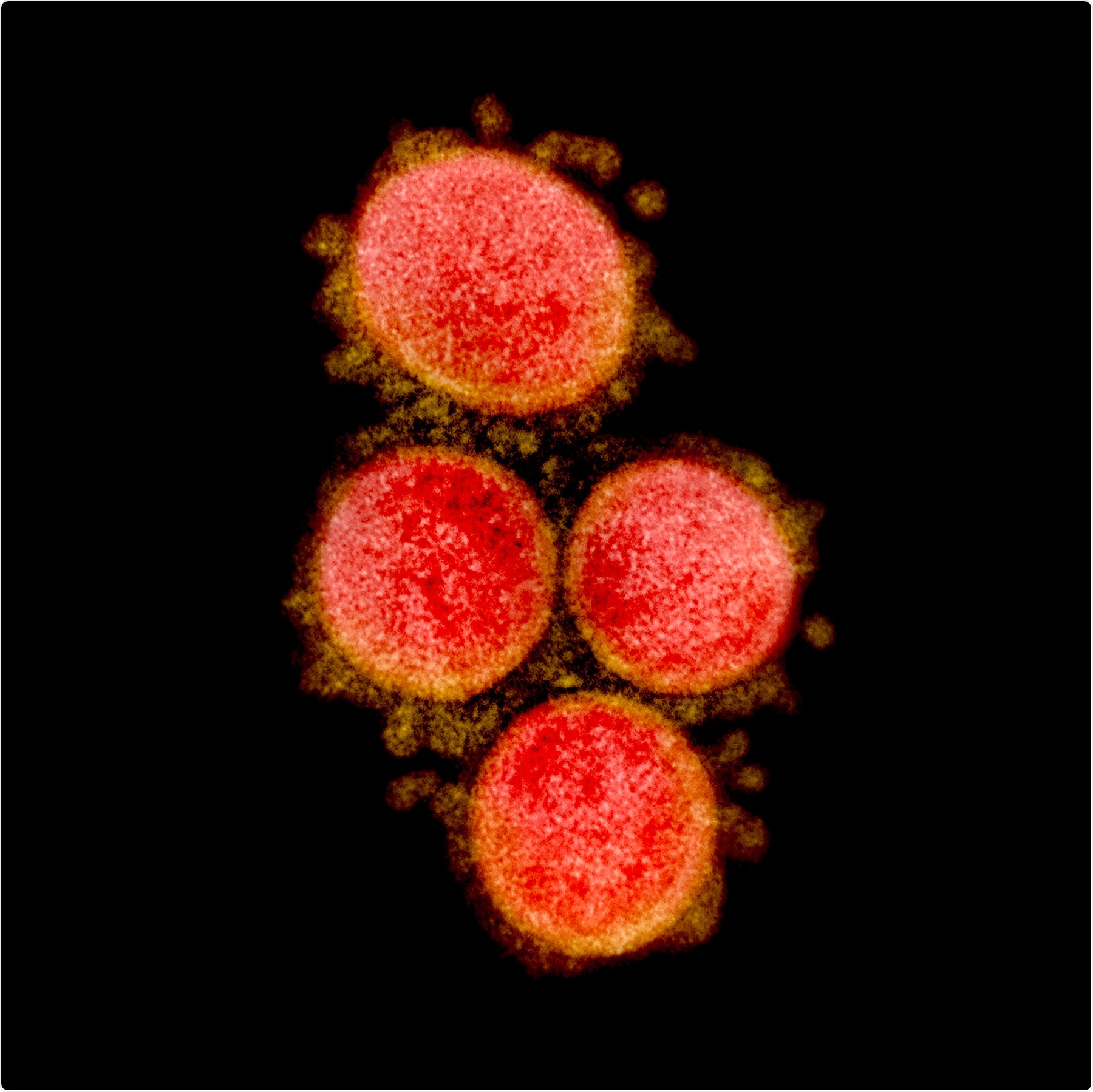Ten months into the coronavirus disease (COVID-19) pandemic, health experts have a good understanding of how the virus spreads. The severe acute respiratory syndrome coronavirus 2 (SARS-CoV-2) spreads through respiratory droplets and aerosols and enters the body through the mouth, nose, and eyes.
The virus has spread across the globe, causing epidemics that range from quickly controlled local outbreaks, such as those seen in New Zealand to large ones that have affected millions of people, akin to the one happening in the United States.
Since the start of the pandemic, many studies and debates have highlighted the relative importance of various transmission routes, the roles of presymptomatic and asymptomatic spread, and the susceptibility and transmissibility of specific age groups.
Now, a new article published in the journal Science provides insights on the engines of SARS-CoV-2 spread.

Transmission electron micrograph of SARS-CoV-2 virus particles, isolated from a patient. Image captured and color-enhanced at the NIAID Integrated Research Facility (IRF) in Fort Detrick, Maryland. Credit: NIAID
Households and other residential settings
The authors of the report from Johns Hopkins School of Medicine and Johns Hopkins Bloomberg School of Public Health said that a majority of SARS-CoV-2 infections happen within households and other residential settings, including nursing homes. The virus usually spreads through close contact with infected individuals, especially those that happen for long periods. Most people live with others, and household contacts include many forms of high-intensity, close, and long-duration interaction.
For instance, a study in South Korea has shown that of the over 59,000 case contacts, household contacts are six times more likely to contract the virus than other close contacts. Further, household contacts accounted for more than half of identified secondary infections in the same study.
The research team also found that even among close contacts, some people are at a higher risk of infection. For instance, spouses are more than twice likely to be infected as other household members, while those who develop symptoms are more likely to transmit the virus. The elderly may face the risk of infection from younger family members who work outside the home.
Just like in families that live together, other residential settings such as prison, home care facilities, and dormitories are high-risk areas for COVID-19 spread. About 66 percent of residents were infected in homeless shelters, 62 percent in a nursing home, and 80 percent in a prison area.
Superspreaders
Although transmission is more common in households and residences, community transmission also plays a significant role in the COVID-19 spread.
Many people with COVID-19 may be presymptomatic or those without symptoms at the start of the infection but develops them later on, or asymptomatic, those who never develop any symptom at all.
“Viral loads appear to be similar between asymptomatic and symptomatic patients, although the implications for infectiousness are unclear. People experiencing symptoms may self-isolate or seek medical care, but those with no or mild symptoms may continue to circulate in the community,” the researchers wrote.
Dubbed as superspreaders, these people may transmit the virus to others without them knowing. It is more difficult to spot these people and trace who were their close contacts.
Meanwhile, superspreading events and transmission-amplifying settings contribute to the rapid spread of the virus.
“Both superspreading events and transmission-amplifying settings are part of a more general phenomenon: overdispersion in transmission. Overdispersion means that there is more variation than expected if cases exhibit homogeneity in transmissibility and number of contacts; hence, a small number of individuals are responsible for the majority of infections,” the team added.
As the pandemic evolves, more and more knowledge is gained on how the virus spreads. However, there is much more to learn about its behavior, especially as the winter season fast approaches the northern hemisphere. A better understanding of how the engines of transmission interact is vital for implementing sound mitigation strategies to combat the raging pandemic, which has now infected over 43.4 million people worldwide.
Sources:
Journal reference:
- Lee, E., Wada, N., Grabowski, M., Gurley, E., Lessler, J., et al. (2020). The engines of SARS-CoV-2 spread. Science. https://science.sciencemag.org/content/370/6515/406